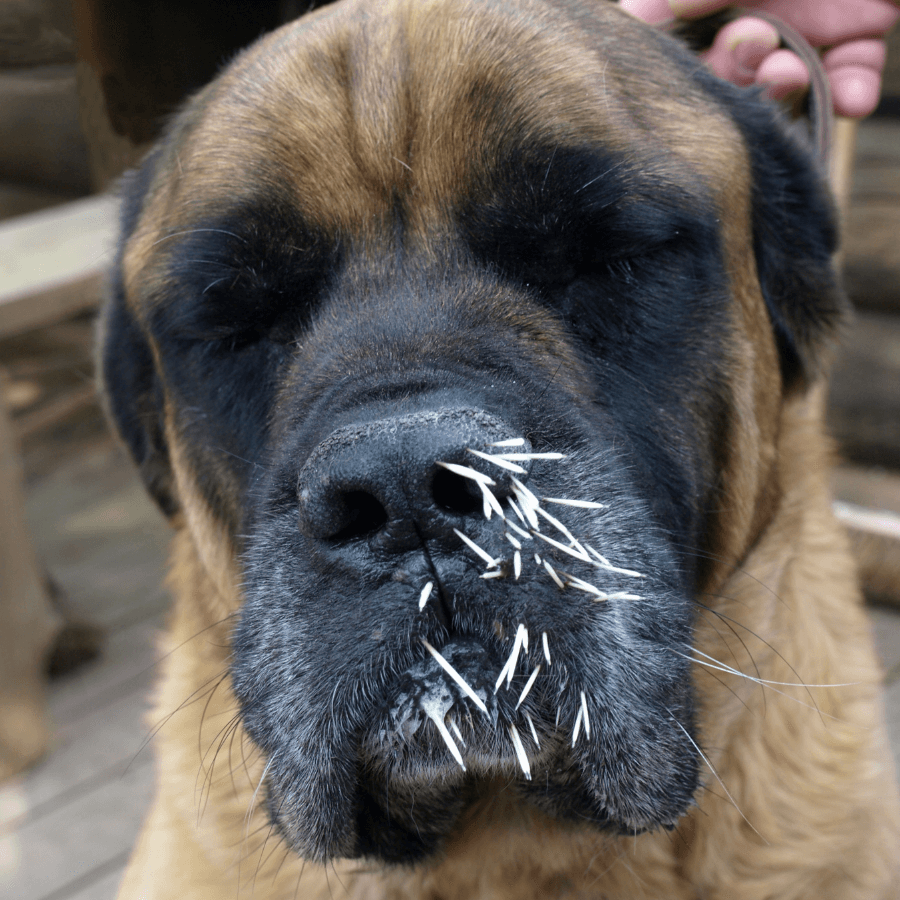
Care Guides
Porcupine Injury Care Guide
Taking proper care of your pet after an accident is vital to their speedy recovery. Luckily, Mancelona Veterinary Hospital has the steps to make it easy.
Taking Proper Care Of Your Pet After An Accident
Porcupine Quills
Porcupines are normally very docile animals. Usually, the pets we see that have been quilled have bitten at, lunged at, or simply sniffed too closely to a porcupine. They often will strike with their tail, which is sufficient to imbed several quills.
- Cutting them in half does not make it easier to pull them out. The end of the quill embedded in the animal has microscopic barbs. These barbs help the quills migrate throughout the muscle layers of the animal. If the impact is hard enough between the pet and the quill, it will sometimes go deep in the muscle and may migrate beneath the skin surface in a matter of minutes. Most dogs will rub, paw, and dig at the quills, which will break the quills off, leaving them submerged under the skin.
Aftercare Instructions
- Watch them closely.
- Prevent them from going on stairs or other dangerous areas until they are fully awake from the anesthesia. This may take 6 to 8 hours.
- Offer your pet a small amount of water 6-8 hours after their procedure. After an hour, you may offer them a small amount of food. If your pet experiences vomiting, pick up their food and water and try again in the morning.
One word of caution:
Not all of the submerged or broken quills can be found. Even when your pet is anesthetized, there may be quills lying between muscle planes in a way that we are not able to feel them. With time, they will continue to migrate and will usually come out at another area. Pet your dog carefully for a few weeks after quill removal to ensure that you do not poke yourself. If you feel a quill, some dogs will permit you to remove them with tweezers or needle-nose pliers. In some cases, general anesthesia may be required again to remove them. The number of these migrating quills depends on how many quills your pet had to begin with, the time between them being “quilled” and having the quills removed, where they were quilled, and how badly they were rubbing or digging at the quills.
Hopefully, your pet will learn from this one experience that porcupines should be avoided, but unfortunately, our experience has been that most dogs will go after porcupines time after time. Because of this, you may need to prevent your dog from running in the woods or keep them under direct supervision when they are there.
